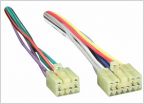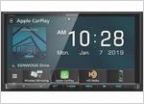-
Welcome to Tundras.com!
You are currently viewing as a guest! To get full-access, you need to register for a FREE account.
As a registered member, you’ll be able to:- Participate in all Tundra discussion topics
- Transfer over your build thread from a different forum to this one
- Communicate privately with other Tundra owners from around the world
- Post your own photos in our Members Gallery
- Access all special features of the site
Wire up an amp!
Discussion in 'Audio & Video' started by Glockman2018, Nov 11, 2024.


 Stock wiring for Amp didn’t go as planned
Stock wiring for Amp didn’t go as planned Wireless Carplay with the Kenwood DMX906S in a SR Loooooooooooooong bed
Wireless Carplay with the Kenwood DMX906S in a SR Loooooooooooooong bed 6x9 components ?
6x9 components ? USB C Conversion
USB C Conversion CarPlay in my 2008 Tundra
CarPlay in my 2008 Tundra













































































